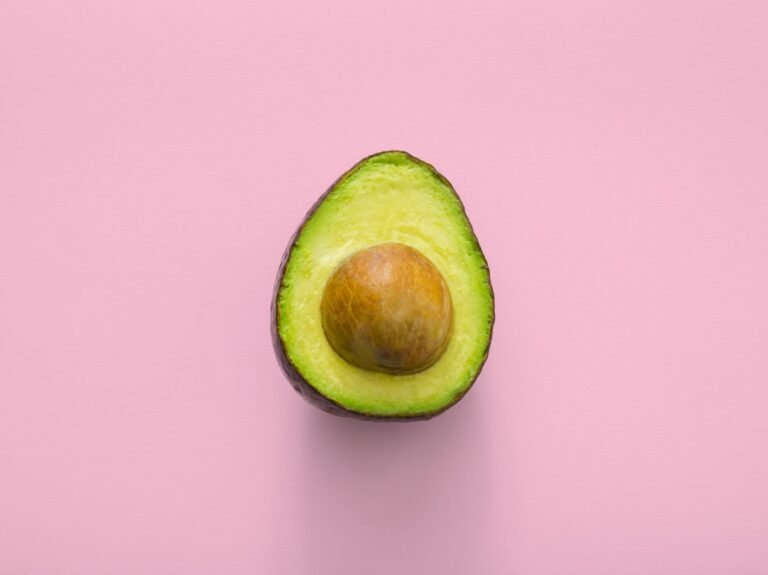Indian cuisine is as diverse as the country itself, with a rich history that dates back thousands of years. The cuisine has been shaped by various influences, including trade routes, invasions, and the diverse regional cultures within India. Indian cooking is known for its vibrant flavors, aromatic spices, and colorful presentation.
Spices and herbs play a crucial role in Indian cooking, adding depth and complexity to dishes. The use of spices is not just for flavor, but also for their medicinal properties. Many spices used in Indian cuisine have been used for centuries in Ayurvedic medicine to promote health and well-being.
Regional variations in Indian cuisine are vast, with each region having its own unique dishes and cooking techniques. The North is known for its rich and creamy curries, while the South is famous for its spicy and tangy flavors. The East is known for its seafood dishes, while the West is known for its use of coconut and seafood.
Key Takeaways
- Indian cuisine is a journey through flavors and colors that reflects the country’s diverse culture and history.
- Vegetables play a crucial role in Indian cooking, providing essential nutrients and flavors to dishes.
- Spices are the heart and soul of Indian cuisine, adding depth, complexity, and health benefits to every meal.
- Popular vegetable dishes like Aloo Gobi and Baingan Bharta showcase the versatility and creativity of Indian cooking.
- Tandoor cooking is a traditional technique that infuses dishes with smoky, charred flavors and textures.
The Power of Vegetables in Indian Cuisine: A Nutritional Overview
Indian cuisine is known for its emphasis on vegetables, making it a great choice for those looking to incorporate more plant-based meals into their diet. A plant-based diet has been linked to numerous health benefits, including reduced risk of chronic diseases such as heart disease, diabetes, and certain types of cancer.
Popular vegetables used in Indian cooking include potatoes, cauliflower, spinach, eggplant, tomatoes, and okra. These vegetables are not only delicious but also packed with essential nutrients such as vitamins, minerals, and fiber. They provide a good source of carbohydrates and are low in fat.
Traditional cooking methods in Indian cuisine help preserve the nutrients in vegetables. For example, steaming or lightly sautéing vegetables helps retain their natural flavors and textures while preserving their nutritional value. Additionally, many Indian dishes incorporate spices that have their own health benefits, further enhancing the nutritional value of the meal.
The Art of Spices: Understanding the Role of Spices in Indian Cooking
Spices are the heart and soul of Indian cooking, adding depth, flavor, and aroma to dishes. Common spices used in Indian cuisine include cumin, coriander, turmeric, cardamom, cinnamon, cloves, and black pepper. Each spice has its own unique flavor profile and contributes to the overall taste of the dish.
Using spices in Indian cooking is an art form. They are typically added at different stages of cooking to release their flavors and aromas. For example, whole spices are often tempered in hot oil or ghee at the beginning of cooking to infuse their flavors into the dish. Ground spices are added later in the cooking process to enhance the overall flavor.
In addition to their culinary uses, spices in Indian cuisine have been used for centuries for their medicinal properties. Turmeric, for example, contains a compound called curcumin, which has powerful anti-inflammatory and antioxidant properties. Cumin is known for its digestive benefits, while cardamom is believed to aid in digestion and freshen breath.
From Aloo Gobi to Baingan Bharta: A Guide to Popular Vegetable Dishes
| Vegetable Dish | Ingredients | Calories per serving | Protein per serving | Fat per serving | Carbohydrates per serving |
|---|---|---|---|---|---|
| Aloo Gobi | Potatoes, cauliflower, onion, tomato, ginger, garlic, spices | 150 | 4g | 7g | 18g |
| Baingan Bharta | Eggplant, onion, tomato, ginger, garlic, spices | 120 | 3g | 5g | 16g |
| Palak Paneer | Spinach, paneer cheese, onion, tomato, ginger, garlic, spices | 250 | 12g | 18g | 10g |
| Matar Paneer | Peas, paneer cheese, onion, tomato, ginger, garlic, spices | 200 | 10g | 15g | 12g |
Indian cuisine offers a wide variety of vegetable dishes that cater to different tastes and preferences. Some popular vegetable dishes include Aloo Gobi (potato and cauliflower curry), Baingan Bharta (roasted eggplant curry), Palak Paneer (spinach and cottage cheese curry), and Chana Masala (chickpea curry).
Each vegetable dish has its own unique recipe and cooking technique. For example, Aloo Gobi is made by sautéing potatoes and cauliflower with onions, tomatoes, and a blend of spices. Baingan Bharta involves roasting eggplant until it becomes soft and then mashing it with spices, onions, and tomatoes.
One of the great things about Indian cuisine is that it can be easily customized to suit individual tastes. If you prefer a spicier dish, you can add more chili powder or fresh chilies. If you like a creamier curry, you can add coconut milk or yogurt. The possibilities are endless, allowing you to create dishes that suit your personal preferences.
The Magic of Tandoor: Discovering the Charcoal Cooking Technique
Tandoor cooking is a traditional method of cooking in India that involves using a clay oven called a tandoor. The tandoor is heated with charcoal, which gives the food a unique smoky flavor and charred texture. Tandoor cooking is commonly used for baking bread, grilling meats, and roasting vegetables.
Some popular tandoor dishes include Tandoori Chicken, Chicken Tikka, and Tandoori Naan. Tandoori Chicken is marinated in a mixture of yogurt and spices before being cooked in the tandoor. The result is tender and flavorful chicken with a slightly charred exterior.
While it may not be feasible for everyone to have a tandoor at home, you can still recreate the flavors of tandoor cooking using a grill or oven. Marinating meats or vegetables in yogurt and spices before grilling or baking them will help achieve a similar flavor profile.
The Sweet and Sour Symphony: Exploring the Diversity of Chutneys and Pickles

Chutneys and pickles are an integral part of Indian cuisine, adding a burst of flavor to meals. Chutneys are typically made from a combination of fruits or vegetables, spices, herbs, and vinegar or lemon juice. They can be sweet, sour, spicy, or tangy, depending on the ingredients used.
Pickles, on the other hand, are made by preserving fruits or vegetables in oil or vinegar along with spices. They are often spicy and tangy, and can be enjoyed as a condiment or accompaniment to a meal.
Chutneys and pickles vary greatly across different regions of India, with each region having its own unique recipes and ingredients. For example, in the North, mint and coriander chutney is popular, while in the South, coconut chutney is a staple. Mango pickle is a favorite across the country, but the recipe and flavors can vary from region to region.
Chutneys and pickles can be used in a variety of ways in cooking. They can be used as a dip for snacks, spread on sandwiches or wraps, or used as a condiment to enhance the flavor of a dish. They add a burst of flavor and complexity to any meal.
Street Food Delights: Sampling the Vibrant World of Indian Snacks
Indian street food is famous for its vibrant flavors, bold spices, and mouthwatering snacks. Street food stalls can be found in every corner of India, offering a wide variety of snacks that cater to different tastes and preferences.
Some popular Indian street foods include Samosas (deep-fried pastry filled with spiced potatoes), Pani Puri (hollow puris filled with spicy water and chutneys), Vada Pav (spicy potato fritters served in a bun), and Bhel Puri (a savory snack made with puffed rice, vegetables, and chutneys).
Each street food has its own unique recipe and cooking technique. Samosas are made by stuffing a mixture of spiced potatoes into a pastry dough, which is then deep-fried until golden brown. Pani Puri involves filling hollow puris with a mixture of spicy water, tamarind chutney, and mint chutney.
If you’re feeling adventurous, you can try recreating these street food delights at home. While they may require some time and effort, the end result will be worth it. You can also experiment with different fillings and flavors to create your own unique versions of these classic snacks.
The Richness of Regional Cuisine: A Tour of India’s Culinary Diversity
India is a country of diverse cultures, languages, and traditions, and this diversity is reflected in its cuisine. Each region of India has its own unique culinary traditions, ingredients, and cooking techniques.
In the North, dishes are typically rich and creamy, with influences from Mughlai cuisine. Popular dishes include Butter Chicken, Rogan Josh, and Biryani. The South is known for its spicy and tangy flavors, with dishes like Dosa, Idli, and Sambar being staples. The East is known for its seafood dishes, with flavors influenced by Bengali and Odia cuisines. The West is known for its use of coconut and seafood, with dishes like Vada Pav and Malvani Fish Curry being popular.
Unique ingredients are used in each region’s cuisine, such as mustard oil in the East, coconut milk in the South, and ghee (clarified butter) in the North. Cooking techniques also vary across regions, with some regions using more frying or grilling techniques, while others focus on steaming or simmering.
Exploring the regional cuisines of India is like taking a culinary journey through the country’s diverse landscapes and cultures. Each region has its own distinct flavors and traditions that are worth exploring.
The Vegetarian Advantage: How India Became the World’s Vegetarian Capital
India has a long history of vegetarianism, with many Indians choosing to follow a vegetarian diet for religious, cultural, or ethical reasons. In fact, India has the highest percentage of vegetarians in the world.
The roots of vegetarianism in India can be traced back to ancient times, with the practice being influenced by religious beliefs such as Hinduism, Buddhism, and Jainism. These religions promote non-violence and compassion towards all living beings, which is why many followers choose to abstain from eating meat.
In addition to the ethical reasons for vegetarianism, there are also health and environmental benefits. A vegetarian diet has been linked to lower rates of obesity, heart disease, and certain types of cancer. It is also more sustainable and environmentally friendly, as it requires fewer resources and produces fewer greenhouse gas emissions compared to a meat-based diet.
If you’re looking to incorporate more plant-based meals into your diet, Indian cuisine is a great place to start. With its emphasis on vegetables, legumes, and grains, Indian cuisine offers a wide variety of delicious and nutritious vegetarian dishes.
The Future of Indian Cooking: Innovations, Trends, and Sustainability in the Kitchen
Indian cuisine is constantly evolving, with new innovations and trends emerging in the culinary world. Chefs are experimenting with fusion cuisine, combining traditional Indian flavors with international ingredients and techniques. This fusion of flavors creates unique and exciting dishes that appeal to a global audience.
Sustainability is also becoming an important focus in Indian cooking. Chefs are using locally sourced ingredients, supporting local farmers and producers. They are also incorporating sustainable cooking practices such as reducing food waste and using energy-efficient cooking methods.
In addition to these innovations, there is a growing interest in preserving traditional cooking techniques and recipes. Many chefs are working to revive ancient recipes and techniques that have been forgotten over time. This helps preserve India’s culinary heritage and ensures that future generations can continue to enjoy the flavors of the past.
Supporting local and ethical food systems is another important aspect of the future of Indian cooking. By choosing locally sourced ingredients and supporting small-scale farmers and producers, we can help create a more sustainable and equitable food system.
In conclusion, Indian cooking is a journey through flavors and colors, with a rich history and diverse regional cuisines. The power of vegetables, the art of spices, and the magic of tandoor cooking all contribute to the unique flavors and aromas of Indian cuisine. Chutneys and pickles add a burst of flavor, while street food delights offer a taste of the vibrant world of Indian snacks. The richness of regional cuisine reflects India’s cultural diversity, while the vegetarian advantage showcases India’s status as the world’s vegetarian capital. As Indian cooking continues to evolve, innovations, trends, and sustainability will shape the future of this vibrant culinary tradition.
If you’re interested in learning more about the vegetables used in Indian cooking, check out this informative article on the health benefits of Indian spices and herbs. From turmeric to cumin, these flavorful ingredients not only add depth to dishes but also offer a range of medicinal properties. Discover how these traditional spices can improve digestion, boost immunity, and even reduce inflammation. To read the full article, click here: https://justtidings.com/bucks-the-agile-and-majestic-herbivores/.




















+ There are no comments
Add yours